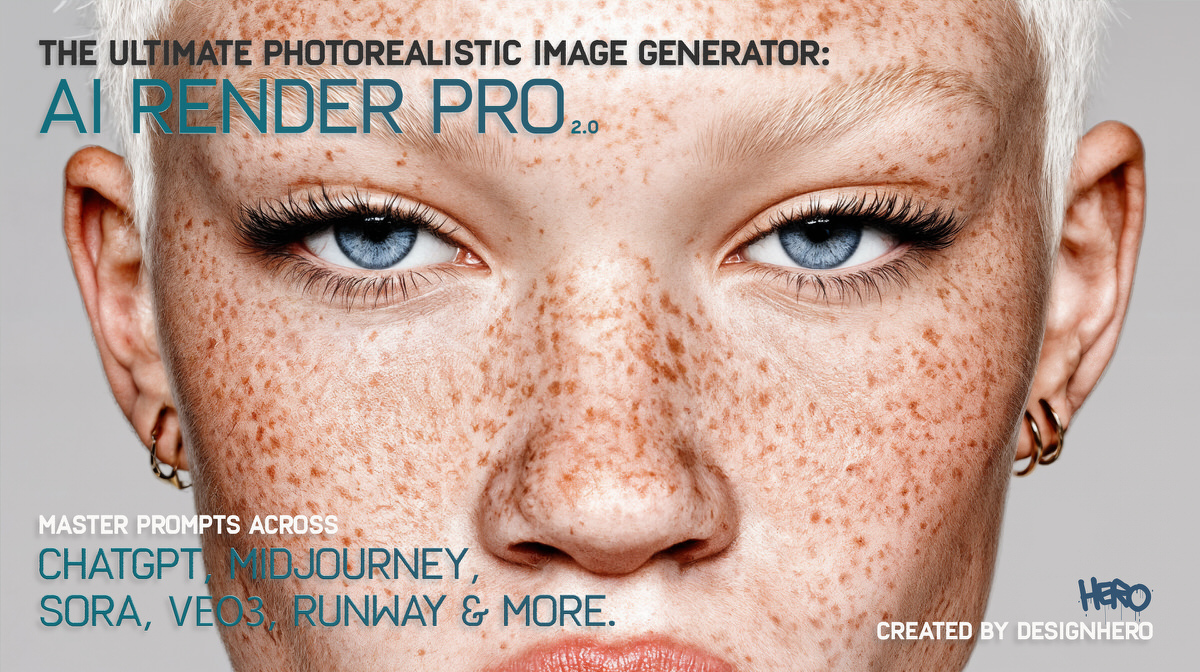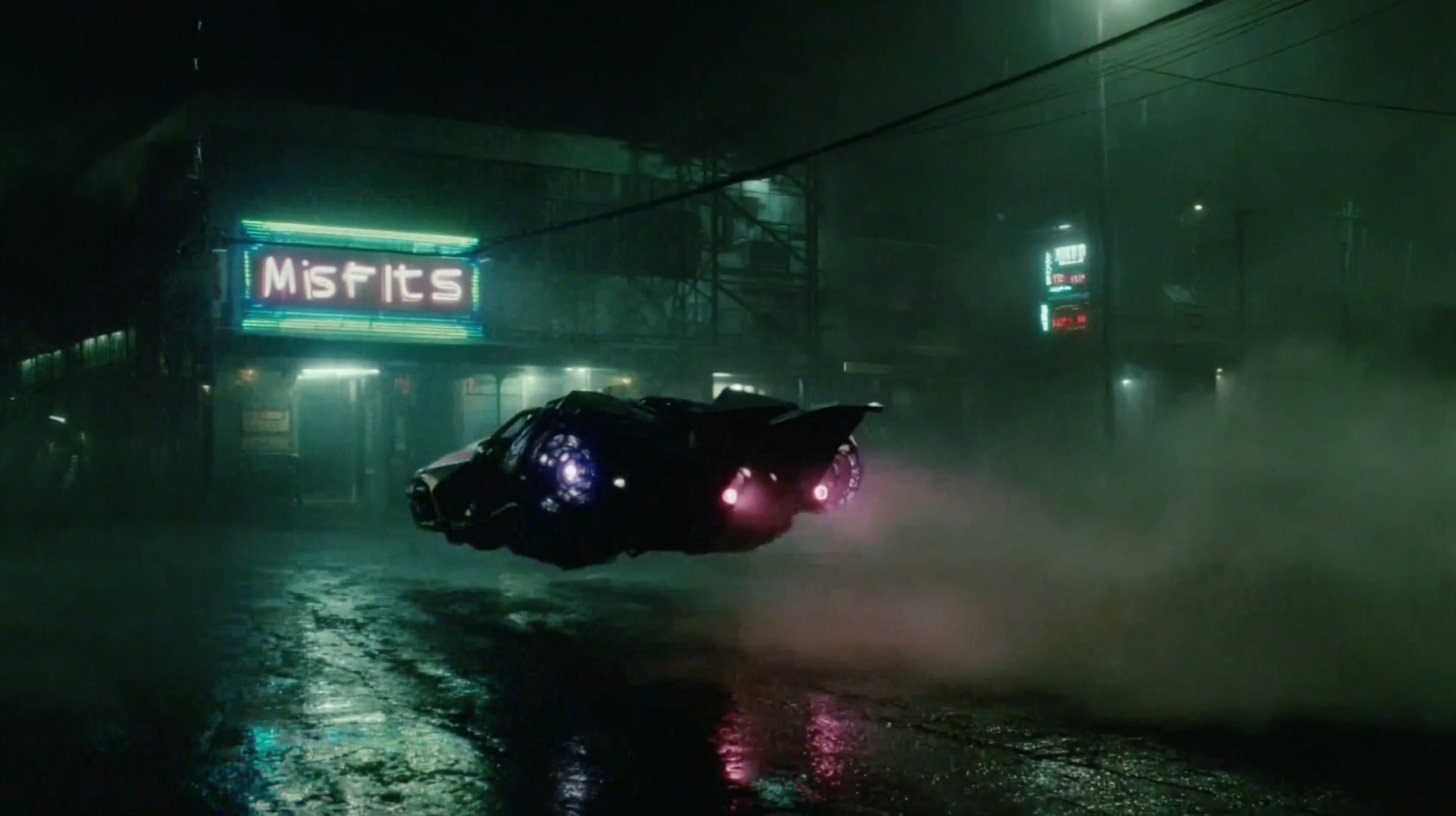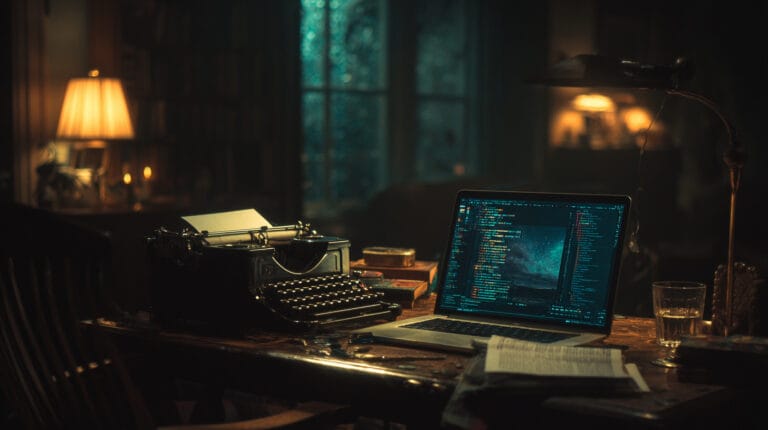AI-driven filmmaking is no longer a novelty; it’s becoming an essential part of modern storytelling. Between rapid iterations, budget-sensitive productions, and remote collaboration, tools like ChatGPT‑5 and VEO 3 Flow can dramatically boost creativity and efficiency. Yet, the key to unlocking these benefits lies in understanding a single concept: prompt engineering video. This guide introduces you to what prompt engineering video actually means, why it matters, and how you can seamlessly integrate ChatGPT‑5 with VEO 3 Flow to produce visually cohesive, emotionally resonant films.
1. Why Prompt Engineering Matters for Video
Prompt engineering is the discipline of crafting precise instructions for AI models. In text-based tasks, it can mean the difference between a vague or actionable output. For video, the stakes are higher: you’re guiding an AI from blank canvas to multi-frame, moving imagery with continuity and nuance.
With prompt engineering video, you learn to instruct AI not only on what to generate but also on how to maintain visual narrative across time. Key elements of filmmaking—like character development, shot composition, lighting, and pacing—translate directly into prompt instructions. By pairing ChatGPT‑5’s natural language capabilities with VEO 3 Flow’s video generation, you can orchestrate entire sequences the way you’d brief a cinematographer and production designer. The result is cohesive story flow, consistent character appearances, and a filmic feel that audiences trust.
2. Understanding Prompt Engineering for Video
At its core, prompt engineering involves clearly defined goals and detailed context. But video adds unique requirements:
- Temporal Coherence: Unlike a single frame, video requires continuity across time. Characters must look the same from one shot to the next. Backgrounds should remain consistent unless you intentionally change location or time of day.
- Motion and Blocking: Your prompts must specify not just the static scene but also how characters move, how the camera moves, and how these actions support your narrative arc.
- Multimodal Alignment: When generating video, you’re coordinating text, visuals, and sometimes audio. Your prompt should weave them together, indicating how dialogue syncs with performance and how sound design supports mood.
Without these considerations, your video might jump unpredictably in style or content, breaking immersion. By meticulously engineering your prompts for video, you ensure that the AI understands your vision, resulting in output you can use directly or with minimal revisions.
3. Setting Up Your AI Filmmaking Workflow
Before diving into prompt creation, assemble your toolset. Here’s a setup that many filmmakers find efficient:
- ChatGPT‑5: Use it to brainstorm, refine story arcs, and develop scene descriptions. ChatGPT‑5’s advanced reasoning can interpret your filmic vocabulary and return structured prompt templates.
- VEO 3 Flow: VEO 3 Flow is your video-generation platform. It interprets cinematic descriptions, camera instructions, and character details to produce AI-rendered clips.
- Midjourney (optional): For fine-tuned still image guidance, use Midjourney to create keyframes or concept art. You can import these frames into VEO 3 Flow for more consistent visual directions.
- AI Render Pro (optional): If available, AI Render Pro bakes cinematic realism into your AI-generated visuals, adding imperfections and film-like qualities to your output.
While optional tools can enhance quality, ChatGPT‑5 and VEO 3 Flow form the core. They work together seamlessly: ChatGPT‑5 drafts and refines the prompts; VEO 3 Flow executes those prompts into motion. When paired with careful planning and an understanding of cinematic language, this combination can produce surprisingly professional results.

4. Using AI Render Pro to Craft High-Impact Video Prompts
AI Render Pro isn’t just a tool; it’s your virtual production assistant for prompt engineering. Built on the power of GPT-5 models, it’s also future-proof—designed to evolve as new GPT models and creative AI technologies emerge. That means your workflow won’t go obsolete; it will adapt alongside the tools of tomorrow.
Brief Like a Professional
Start with narrative context. Write a concise synopsis: character motivations, narrative stakes, and emotional tone. Then move into scene specifics: location, time of day, desired mood. For example, “a gritty alley at dusk, filled with tension and flickering neon”.
Layering Detail with AI Render Pro
- Narrative: Outline the action in the scene. Is your character uncovering a secret, confronting an enemy, or experiencing a moment of reflection?
- Visuals: Add environmental textures, lighting quality (soft golden hour vs. harsh moonlight), camera angles (low shot, dolly move, overhead), lens choices (wide vs. telephoto), and atmospheric details like dust particles in sunlight or rain-slicked streets.
- Performance: For dialogue-heavy moments, define emotional cues: “character whispers with shaky voice, avoiding eye contact, fingers trembling around a cigarette.”
Iterate with AI Render Pro
Use the tool to generate variations, spot missing elements, and refine prompts. The key is clarity, not verbosity—AI models perform best with descriptive yet direct instructions.
With AI Render Pro, your prompts act like a director’s shot list and cinematographer’s notes combined. Today it leverages GPT-5, but tomorrow it will seamlessly integrate with the next generation of models. The sharper your brief, the stronger the final output—now and in the future.

5. Translating Prompts into VEO 3 Flow
With refined prompts in hand, it’s time to deploy them in VEO 3 Flow. To ensure the model interprets your instructions correctly:
- Scene Blocks: Divide your project into scenes, each with its own prompt. Scenes should describe location, composition, lighting, motion, and any key events. The sequence of scenes replicates your storyboard.
- Frames-to-Video Workflow: If you’ve used Midjourney to generate keyframes, you can feed those frames into VEO 3 Flow’s “Frames-to-Video” feature. This anchors the AI’s style and structure, ensuring that motion builds off a strong visual foundation.
- Style Consistency: Keep aesthetic markers constant across scenes unless you intentionally want to show a visual shift. Elements like color palette, lens properties, and atmosphere should remain consistent for continuity.
- Tone and Pace: Instruct VEO 3 Flow on camera movement (e.g., “slow dolly-in”), relative shot lengths (“hold for 5 seconds before cut”), and pacing cues (“linger on the protagonist’s hesitation”). This gives you more control over the cinematic rhythm.
6. Prompt Engineering Strategies for Filmmakers
Beyond general tips, certain strategies ensure AI-generated videos align with professional filmmaking standards:
- Temporal Continuity: It’s critical that a character’s look remains consistent. When designing prompts, reference previous scenes and maintain details like eye color, clothing style, and hair. If a character wears a bandage in one scene, carry it over.
- Motion & Blocking: Video prompts should specify how characters move through space. Phrases like “walks slowly from left to right, stopping near the street light” or “camera pans to follow as she crosses the room” help the model animate correctly.
- Atmosphere & Realism: Add environment cues. Dust, mist, fog, rain, flickering neon, and heat waves make your scene feel alive. Prompt these elements explicitly and describe their interaction with light.
- Emotional Continuity: When shooting AI scenes with dialogue, ensure that subtle cues match the emotional arc. If a character’s mood shifts, note the change (“voice cracks with emotion,” “fists clench”).
Prompt engineering is essentially cinematography via text, so think like a filmmaker and communicate accordingly.

7. Advanced Prompt Iteration Techniques
You’ll rarely get perfect results in one pass. Use these iteration methods to refine your outputs:
- Fast vs. Quality Rendering: VEO 3 Flow’s “Fast” mode is less detailed but ideal for quickly testing prompts. Reserve “Quality” mode for your approved shots, saving credits and time.
- ChatGPT‑5 as Debugger: If a prompt fails—maybe the lighting isn’t right or the character looks different—ask ChatGPT‑5: “Why might this prompt result in mismatching colors?” and it can offer revisions (e.g., adding “consistent color palette” to the prompt).
- JSON Breakdown Method: For granular control, export the frame or scene to a JSON description. Use this data to isolate the attributes that need fixing (e.g., eye color or background elements) and regenerate only those aspects, preserving the rest.
- Keep Notes: Maintain a record of prompt variations, the result of each iteration, and what improvements you made. Over time, you’ll build a personal library of prompt templates tailored to different styles and genres.
8. Real-World Prompt Examples
To illustrate the concept of prompt engineering video, let’s explore three practical scenarios. Each example combines ChatGPT‑5 guidance with VEO 3 Flow execution.
Example 1: Dramatic Crime Scene
Prompt:
“Nighttime alleyway in urban Tokyo. Rain reflects neon signs. Our protagonist, a late‑30s man with short-cropped hair, limps into frame from the left, breathing heavily. Police sirens flash from the distance. Dust particles float through the street light. Camera handheld at waist height, slow push forward. Tone: tense.”
This prompt specifies setting (alley, neon), weather (rain), character detail (appearance, movement), lighting (street light reflecting rain), and camera style. VEO 3 Flow will generate a gritty, handheld shot that aligns with these cues.
Example 2: Commercial Beauty Spot
Prompt:
“Close-up of a young woman with freckles and loose, wavy hair. She looks straight into camera, smiling gently. Soft light from a large window on the left, rim light behind to separate her from a dark background. She applies lipstick and then laughs. Lens 85mm, f/2.8. Camera stays steady. Tone: joyful, intimate.”
Here, the prompt prioritizes facial detail, soft glam lighting, specific lens properties, and minimal motion. Perfect for a beauty product ad where the focus is on realism and emotion.
Example 3: Documentary Handheld Sequence
Prompt:
“Daytime interior of a rustic kitchen. An elderly man in a plaid shirt sits at a wooden table, chopping vegetables. Dust floats in sunbeams streaming through the window. Camera handheld, mild shake. Occasionally zooms in slowly, capturing his hands. Background sound: distant radio playing. Color palette muted warm browns and greens.”
This prompt uses documentary conventions: handheld, natural lighting, environmental detail, and a specific audio cue. It instructs VEO 3 Flow to produce a scene with authenticity and warmth, perfect for a documentary sequence.
By providing these details, you guide the AI to produce coherent, professional clips.
9. Common Mistakes in Prompt Engineering for Video
Even with experience, it’s easy to slip up. Avoid these common pitfalls:
- Overloading Adjectives: Words like “hyperrealistic,” “ultra 8K,” and “masterpiece” can confuse AI models. Focus on concrete directives—lighting style, camera movement, environment details.
- Under-Specifying Motion: If you don’t define how characters or cameras move, you risk unmotivated action or static shots when you wanted dynamism.
- Ignoring Lighting Consistency: Changing light direction without narrative reason can break continuity. Always reference the previous scene’s lighting if it stays in the same space.
- Forgetting Timeline Cues: Scenes should have clear transitions. Without proper prompts, AI might jump from day to night or shift time of day unexpectedly. Use “as the morning sun rises” or “later that evening” to anchor time.
Identifying and correcting these issues early will save time and energy in revisions.
10. Scaling Your Prompt Workflow
Once your prompt engineering process works for a few scenes, scale it up:
- Prompt Templates: Save templates for recurring setups—like interviews, car chases, romantic close-ups—so you don’t reinvent instructions each time.
- Shot Library: Build a library of shot-specific prompts (e.g., “over-the-shoulder conversation,” “establishing wide shot with drone-style movement”). Reusing these prompts speeds up pre‑production.
- Team Collaboration: Share prompts and results in collaborative tools like Dropbox or Google Drive. Use ChatGPT‑5 to collate feedback and incorporate changes for the next iteration.
- Post-Production Integration: If using additional AI tools for editing (like AI Render Pro or Runway), align your prompts with your editing pipeline. For instance, mention that certain shots require slow-motion effects or film grain so post tools match your intent.
Scaling ensures consistency across a project, letting you maintain your visual narrative no matter how long or complex your film becomes.

11. Conclusion & Call to Action
Prompt engineering video with ChatGPT‑5 and VEO 3 Flow transforms how filmmakers and content creators approach storytelling. By translating filmmaking concepts—lighting, motion, narrative, tone—into clear, actionable prompts, you can direct AI like you would a human crew. Combining these tools leads to faster pre-production, more precise pre-visualization, and AI-generated footage that feels crafted rather than random.
Experimentation remains essential. As you iterate on your prompts, you’ll refine your process and discover your unique AI filmmaking voice. And as always, balance technology with human creativity—AI excels at building scenes from instructions, but your vision and style give those scenes meaning.
Ready to take your AI filmmaking to the next level? Start exploring with the prompt templates in this guide, and consider integrating AI Render Pro for added cinematic depth and realism. Your stories are waiting to come alive.
Key Takeaways
- Prompt engineering video is about clarity, continuity, and cinematic specificity.
- ChatGPT‑5 is a powerful assistant for refining story, scene, and shot descriptions.
- VEO 3 Flow turns well-crafted prompts into high-quality video sequences.
- Iterate smartly using Fast and Quality modes, and don’t be afraid to revise.
- Build a scalable library of prompts and tailor them for repeat use.
By mastering these methods, you’ll not only create better AI-powered films—you’ll be at the forefront of a new era in storytelling.
Frequently Asked Questions
Q1. What is prompt engineering for video?
Prompt engineering for video is the process of crafting detailed instructions that guide AI models to generate coherent moving images. Unlike single-frame prompts, video prompts must account for continuity, character consistency, motion, and cinematic pacing.
Q2. Why is prompt engineering important in AI filmmaking?
Because video is temporal, small inconsistencies (like changing character appearance or lighting direction) can break immersion. Prompt engineering ensures your scenes remain visually consistent and emotionally engaging from one frame to the next.
Q3. How does ChatGPT-5 help with prompt engineering video?
ChatGPT-5 can brainstorm story arcs, refine scene descriptions, and suggest prompt variations. Its advanced reasoning allows it to interpret cinematic language—like “slow dolly-in” or “soft golden hour lighting”—and translate that into usable prompt templates.
Q4. What role does VEO 3 Flow play in this workflow?
VEO 3 Flow is the video-generation engine. It takes your refined prompts and produces motion clips, maintaining style and continuity across scenes. With features like Frames-to-Video and style consistency, it’s the execution layer of your AI filmmaking pipeline.
Q5. Where does AI Render Pro fit in?
AI Render Pro works as a virtual production assistant for crafting high-impact prompts. It uses GPT-5 now, but is future-proof—designed to adapt to newer GPT models. It adds cinematic realism (textures, lens effects, imperfections) and helps you build director-level prompt instructions.
Q6. Can I integrate other tools like Midjourney?
Yes. Many filmmakers use Midjourney to create keyframes or concept art, then feed those stills into VEO 3 Flow. This anchors the AI’s style and helps maintain consistency across moving sequences.
Q7. What are common mistakes to avoid in video prompts?
- Using too many vague adjectives (e.g., “hyperrealistic masterpiece”) instead of clear directives.
- Failing to specify motion (character blocking, camera movement).
- Ignoring lighting continuity between scenes.
- Forgetting temporal cues (day/night shifts, scene transitions).
Q8. How do I scale prompt engineering across a whole film?
Save prompt templates for recurring shot types, build a personal shot library, and share documents with collaborators. Over time, you’ll create a reusable system that speeds up production while keeping your film visually cohesive.
Discover more from Olivier Hero Dressen Blog: Filmmaking & Creative Tech
Subscribe to get the latest posts sent to your email.













